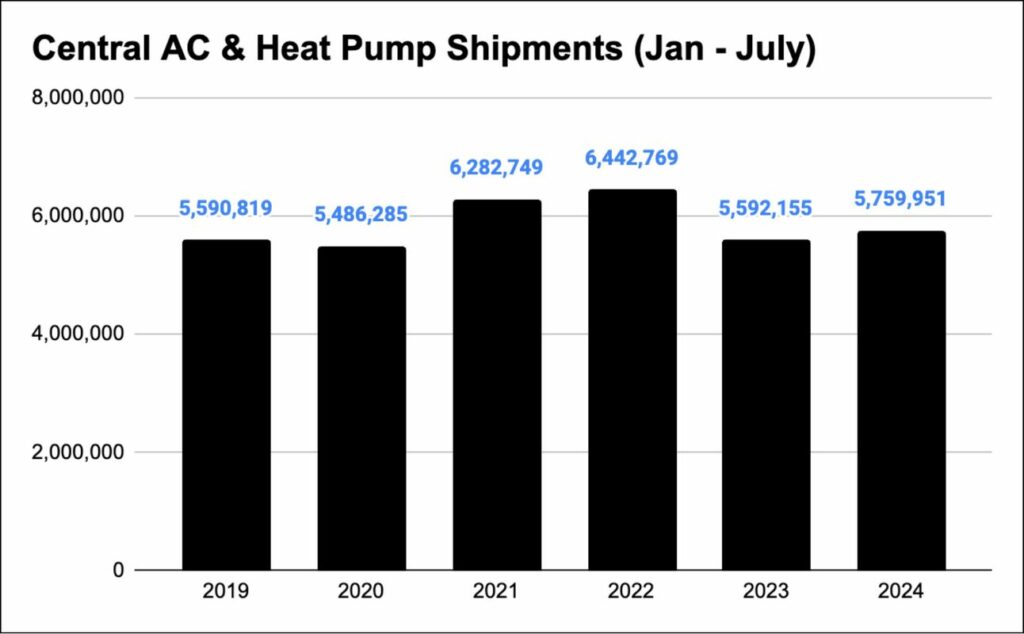Humor and big bucks: Tackling the HVAC industry’s labor crunch
A Q&A with Ruchir Shah, founder of SkillCat, a digital education company that's enrolled over 300,000 students in its skilled trade programs

Image: Thaddeus Stevens College of Technology
Over 30 million Americans will turn 65 between now and 2030, and, according to the Bureau of Labor Statistics, the HVAC industry will need to fill 42,500 technician job openings a year until 2033 to meet demand.
It’s a hot issue, so I caught up with Ruchir Shah, founder of SkillCat, a digital education company that’s enrolled over 300,000 students in its skilled trade programs, to chew on what’s working (and not working), recruiting-wise, how technology can help the problem, and more. Below is our conversation, lightly edited for clarity.
How do you and the SkillCat team view the HVAC industry’s labor issue?
-
“I think there's an awareness and an access problem. There are quite a few people out there who are great fits for skilled trade jobs, but they don't realize how amazing they are. They don't understand the growth potential and how much money they can make.”
-
“The second part is access. It's actually really challenging for a lot of people to get into the trades. When you're looking at people with skills who might be a good fit, they're often people who don't have much money or time, or they have families and other priorities that they can’t just give up to go to trade school for a year or two.”
From your perspective, how can the awareness problem be addressed?
-
“Typically, recruiters fish in the same pool: White males who have been in the industry for five to ten years. And all of those technicians are getting a million offers from a million people. But you see a lot of women and minorities who want to get into the trades.”
-
“There's a very small percentage of African Americans in higher-level skilled trade jobs, but there's a tremendous amount in areas like construction. So how do you educate those folks about the opportunity to give them access?”
Can you elaborate on the minority point?
-
“For example, I think it’s important to have recruiting materials in Spanish to target that population better. There are also a lot of [interested] veterans and ways to get in touch with them, like SkillBridge, where you can directly access veterans as they're coming out of the military.”
Any thoughts on the “skills vs. experience” hiring dilemma?
-
“There are all these people with five to ten years of experience in oil and gas or manufacturing, who have mechanical and electrical skills, have worked with motors and done a ton of troubleshooting, but don't have HVAC experience, so they get rejected or aren’t seriously considered by companies.”
-
“And I think that's a mistake because you can find really exceptional people who have these skills, but if you don't consider skills-based hiring, you're not gonna get them.”
That makes sense. Separately, there’s a solid argument to be made for recruiting green talent with neither experience nor skills. How do you think about that?
-
“I think the benefit of finding folks who are a little bit more experienced in another industry is you have to do less training; they can hit the ground running faster. So I don't know if it's an either-or; it's all of the above, right? You need to try a mix of these strategies to find the best talent.”
How would you approach recruiting more women into the trades?
-
“I don’t think a lot of women realize that not all of these jobs are super ‘manual-labor intensive.’ You don't always need to be able to lift hundreds of pounds to do these jobs. So, first, it’s about education.”
-
“Then it’s about meeting women where they are and maybe running ads on Pinterest instead of other channels, for example. So finding more creative sources to actually meet women where they are and educating them that not all of these jobs are jobs they can’t do.”
What other advertising formats have you seen work well for spreading industry awareness?
-
“There are companies crushing it on TikTok, making fun of how much they need technicians. So an HVAC tech will get kidnapped, and it’s funny because it’s poking fun at the issue. I think in the medium term, humor goes a long way.”
-
“I've seen some great police ads on the subway in New York. It's a slightly different world, but it's similar. And they talk about pay and pay growth. I don’t think people realize how much money you can make in these jobs. So it’s just highlighting the things people care about most, like pay, work-life balance, and being able to work for yourself.”
You obviously run a tech company, so in your best, unbiased effort, how do you respond to contractors who are skeptical about leveraging technology for training?
-
“The biggest companies have these very traditional, expensive apprenticeship programs where they have instructors in a classroom, but I think this is where software can be useful. You can do all of these things pretty well, digitally.”
-
“Not only can you track which online courses they go through to learn all of the material, but technicians can actually take pictures and videos of tasks in the field and upload them. So you have a full database of your technicians’ progress.”
-
“Nothing beats a great set of instructors or hands-on learning, but until you can afford some of those things, technology can be a tremendous resource. It’s a good supplement to support you on your way there.”
📬 Get our stories in your inbox
Keep reading
What contractors are saying: Working with Gen Z
Lessons, observations, and more from contractors across the U.S.
July HVAC shipments up 22%
Central AC and heat pump shipments rose 22% year-over-year in July, and year-to-date shipments increased by 3% from 2023


